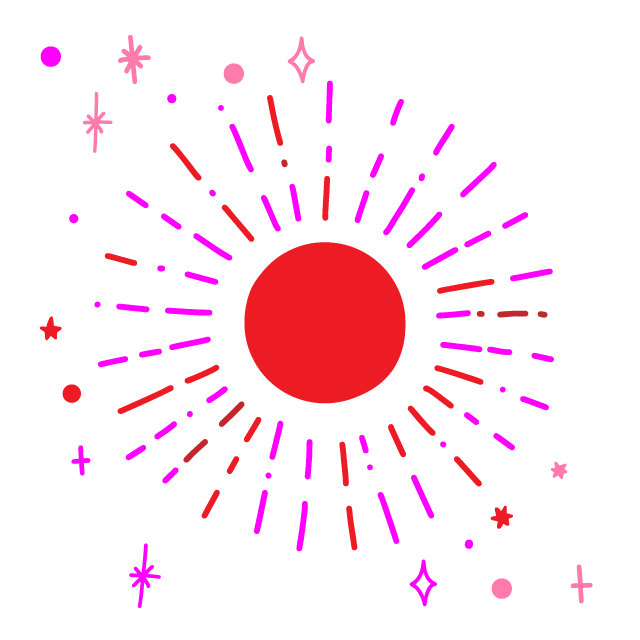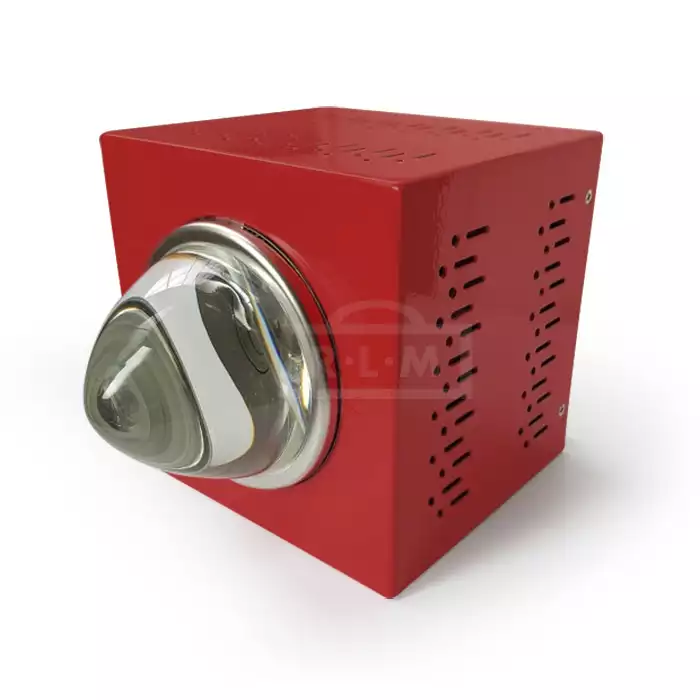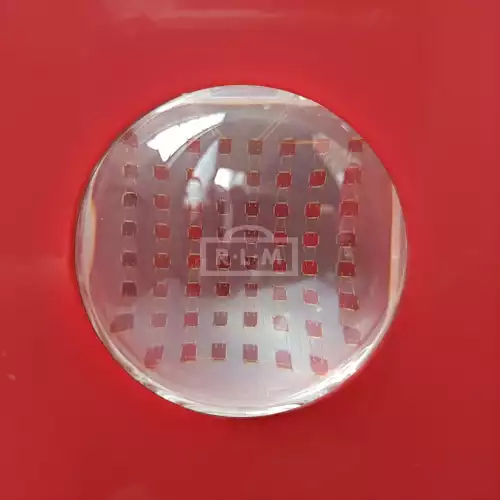
Red Light Therapy for Depression: Battle Depression with Light
Battling depression is something we all go through from time to time. Some of us are more prone to mental health issues with depressive episodes.
For us, fighting depression and anxiety requires a complex, holistic approach. In this article I want to touch on an often overlooked part of managing our depressive symptoms and mood by utilizing light and red light therapy for depression.
Holistic approach means adopting complementary methods when dealing with depression. Fighting depression and mood swings requires catering to the mind, the body and the soul.
Thus we can’t overcome depression symptoms by therapy alone (even with my favorite IFS therapy). Therapy and self-therapy is truly useful only if part of a complex approach. We can only go so far in improving depression symptoms if we use only journaling, meditation or practice a spiritual belief.
The real way to overcome depression, including the seasonal one, is to properly engage our minds, our souls and our bodies.
Dealing with Depression with Light Therapy
Light therapy (photobiomodulation) can be a great tool for dealing with depression. In addition to photobiomodulation, dealing with depression generally requires paying attention to a number of inside and outside factors. By introducing a complementary, all-round approach to our mental health, we are better equipped to manage depression.
How to Manage Depression without Medication
To manage depression without medication, we can adopt this complementary approach of habits, including light exposure. As I have said, we can’t ignore the trinity of body, mind and soul, when it comes to dealing with different types of depression, including seasonal affective disorder (SAD).
A complementary, holistic approach for managing depression includes a sum of the following practices:
Mind: Switch It On Occasionally
Stay sharp by continuously learning new things and practicing old knowledge. When your mind is engaged, a whole set of psychological benefits take place – in short, you feel more useful, purposeful and motivated. When you have awareness of your personality, your psychological issues and your ways of thinking, you are better equipped to combat depressive episodes.
Soul: Explore Spiritual Ideas that Match Your Personal Point of View
To feed the need for spiritual growth each of us has inside us, explore spiritual ideas based on your personality, preferences, values and experience. Conversely, switch off your brain with meditation and mindfulness practice. A spiritual perspective is undoubtedly a core human need – even though some people would deny that. It is your particular point of view that matters in this regard. Of course it goes without saying – if a harsh and judgemental religious belief makes you feel bad about yourself, it is counterproductive to depression and anxiety symptoms
Body: Find the Right Physical Activities for You and Form Habits to Maintain Them
Choose the fitness exercises just for you and trick your mind into performing them by forming habits step by step. To overcome depression and SAD we need enough exercise, proper food and exposure to light and nature.
It is all personal and it’s all a journey that each of us with a history of dealing with mental health challenges needs to take on, and be consistent. Not all of us like running, for example.
However, morning runs and walking in general is a great way to incorporate another physically-based habit – sun exposure. Which leads me to my favourite new topic for mental health: Light Therapy and sun exposure for mental health.
Also, using a gratitude journal such as 7 Days of Positive Thoughts one is a great way to manage depression and mood swings. It engages both the mind and the soul.
Sunlight Therapy to Manage Anxiety & Mental Health
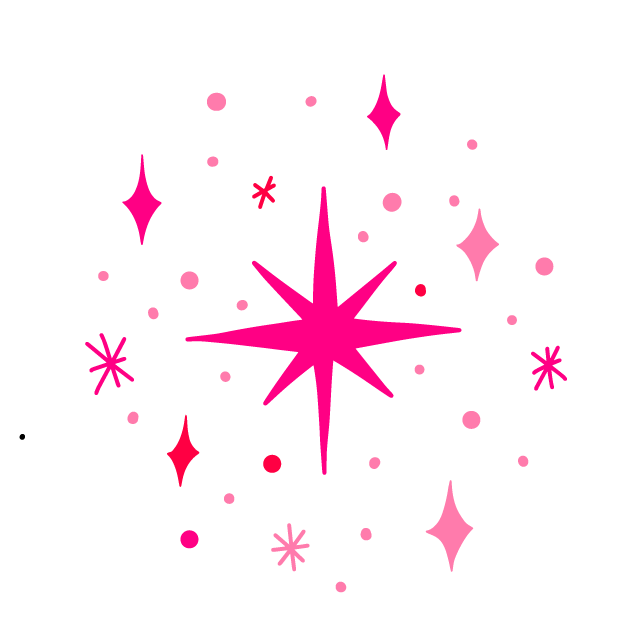
Sunlight Radiation for Depression
The sun emits radiation across a broad range of wavelengths and most is not visible. Sunlight is a spectrum that ranges from 100 nanometers to 1,000,000 nanometers (1 millimeter).
Without going into too much detail, sunlight that reaches earth can be divided into Ultraviolet (UV) radiation (100-400 nm), Visible light (about 400 – 700 nm) and Infrared (IR) radiation (700 nm – 1 mm).
Using Sunlight as a Natural Remedy for Depression
It is a well-known fact that sunlight is important for our mental health; then, exposure to sunlight is a natural remedy for depression. If you experience mood swings, going out in the sun more often would be of great help, in addition to journaling and other mental health acitivites.
Natural Light Therapy: How Does Sunlight Help Depression?
Firstly, exposure to sunlight increases serotonin levels. It also regulates our circadian rhythm – the inner clocks that ultimately regulate sleep and thus help with depression. In addition, UVB light generates vitamin D in the skin, another key factor for our mood and mental health.
Sunlight for Mental Health
Today an emerging field of research suggests that sunlight can help with mental health and depression in other ways besides just brightness. Sunlight is important for mental heatlh particularly because of the sun’s wavelength spectrum.
According to Dr. Seheult, an Associate Professor at the University of California, exposure to sunlight is crucial for mental health not only because of its brightness. Sunlight exposure alleviates mood swings also because of the red and infrared light spectrum. Some of these wavelenghts are invisible to the human eye, but still biologically acitve.
Natural Light Therapy for Mental Health
Thus light therapy for mental health can be simply going out in the sun early enough every day, but it’s important to do it in nature if possible (more on this in this interview). Exposure to sunlight early in the day, even in cloudy days, is also important for setting the circadian rhythm and your sleep cycle.
Red and Infrared Light in Sunlight for Depression
Depression has a strong correlation with sunlight exposure, according to Dr. Seheult and the research he cites.
Much of the sunlight’s spectrum, such as red and infrared light, have unique properties directly related to depression. These wavelengths carry heat energy and can penetrate deep into the skin. Furthermore, they may stimulate mitochondria in a healing way.
Sunlight for Mental Health and Well-Being
Some of the red light from the sun is visible to the human eye; the rest of the spectrum isn’t visible and we only feel the heat of it. However, even though we don’t see it, the light penetrates skin and tissues and affects the body on a cellular level. In short – our mental health and well-being depends on enough sunlight exposure (or tools to imitate that).
Light Therapy for Depression – Sunlight’s Properties
Interestingly, not all wavelengths of sunlight have the same impact on our mental health. This is the core idea behind light therapy for depression (light therapy is also called photobiomodulation, or PBM). Research suggests that red and infrared light have unique properties that are directly related to depression. These wavelengths carry heat energy and can penetrate deep into the skin, potentially stimulating mitochondria in a healing way.
Near-Infrared Light for Depression and Anxiety
Some of the light studied for depression and anxiety, as well as other mental health disorders, is in the visible spectrum, while some fall into the IR (infrared) range. So a growing set of research suggests that both red and infrared light (particularly near-infrared light) are a key factor for battling depression and anxiety.
In addition to that, traditionally light therapy for depression has used bright light as a substitute for lack of natural sunlight, especially during winter seasons. This is why bright light therapy was initially developed for Seasonal Affective Disorders (SAD).
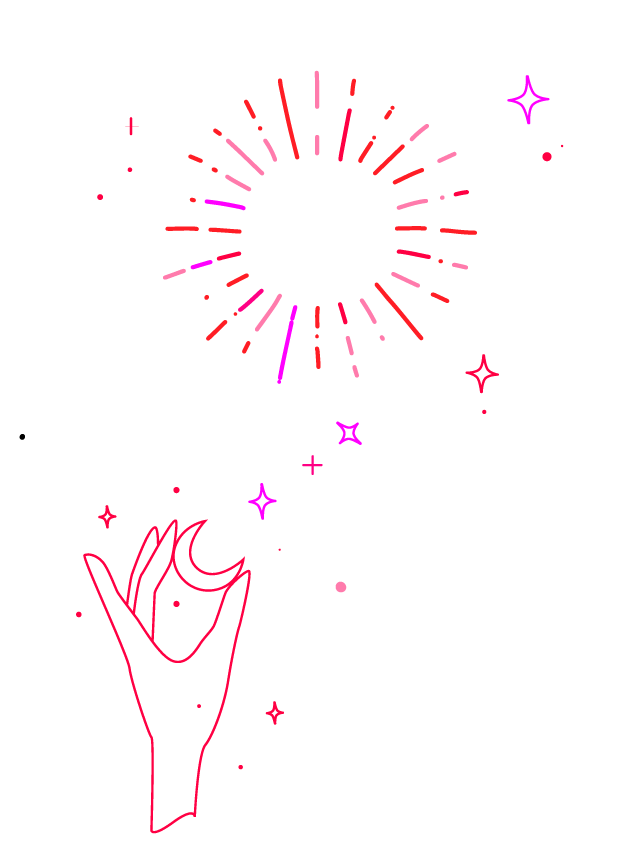
Seasonal Affective Disorder Light Therapy
As I said, initially the idea behind light therapy was to substitute lack of sunlight during winter seasons. The initial concept behind seasonal affective disorder light therapy was that all we need is more light into our eyes to feel better – regardless of the type of light.
But there may be much more to the story. Research now suggests that certain light wavelenghts have biological effect that combats depression and seasonal affective disorder (SAD). This is why red and infrared light therapy for depression has been gaining interest for a while now.
Red & Near-Infrared Light for Anxiety and Depression
Natural Light Therapy for Mental Health
Thus light therapy for mental health can be simply going out in the sun early enough every day, but it’s important to do it in nature if possible (more on this in this interview). Exposure to sunlight early in the day, even in cloudy days, is also important for setting the circadian rhythm and your sleep cycle.
Red and Infrared Light in Sunlight for Depression
Depression has a strong correlation with sunlight exposure, according to Dr. Seheult and the research he cites.
Much of the sunlight’s spectrum, such as red and infrared light, have unique properties directly related to depression. These wavelengths carry heat energy and can penetrate deep into the skin. Furthermore, they may stimulate mitochondria in a healing way.
Some of the red light from the sun is visible to the human eye; the rest of the spectrum isn’t visible and we only feel the heat of it. However, even though we don’t see it, the light penetrates skin and tissues and affects the body on a cellular level. In short – our mental health and well-being depends on enough sunlight exposure (or tools to imitate that).

In addition to movement and proper sun exposure, self-therapy and spiritual self-development are als0 crucial for supporting your mental health and sense of well-being.
Light Therapy for Depression – Photobiomodulation
Photobiomodulation is another name for light therapy. It has been studied for different conditions, including mood disorders and depression. Light therapy expands on the suggestion that exposure to certain light wavelengths has biological effects.
Light therapy for depression aims to double down on certain types of light (wavelengths measured in nanometers, or nm), or generally increase exposure to light. Photobiomodulation uses different wavelengths (if visible perceived as light colors), including UV light, bright light and blue light, other visible colors, but also red and the infrared spectrum.
Photobiomodulation has shown promising results for a variety of conditions – depression, skin problems, inflammatory conditions and Alzheimer and Parkinson’s, to name a few.

Following self help advice and using a journaling technique such as Designing Your Life’s ones can be a great support for your mental health.
Red Light Therapy Benefits
Overall, light therapy’s different subsets mentioned below have different properties and benefits. Bright light therapy has been traditionally part of photobiomodulation treatments for depression. However, red light therapy may have extra benefits, especially regarding mental health (but not only).
Red light therapy’s key idea is that certain wavelengths have a capacity to stimulate the mitochondria, the so-called powerhouse of the cells. Red light also penetrates deeper into the skin, although research is slightly controversial about that. Generally, red light device proponents adhere to the idea that deeper penetration is not needed for a therapeutic effect.
Important to note is that infrared light penetrates even deeper. Generally, the wider the wavelenths, the deeper they penetrate; the shorter they are, the more destructive (think of the invisible UV light on the other side of the visible spectrum).
Using Red Light Therapy for Depression
Treating depression, anxiety and mood swings with red light therapy today involves a device emitting a certain wavelength range. These devices vary – some are transcranial (go over the head and sometimes at the nose too).
Their LEDs are said to create a diverse beam that collectively penetrate deep into the scull for maximum benefit. However, palpable positife effects to the mood have been observed with lamps and LED panels as well.
Mechanism of Action of Red Light Therapy
Irradiation with certain wavelengths in red light therapy increases energy production in the mitochondria. At the core of the process is increased production of adenosine triphosphate (ATP). ATP is the molecule that is the source of energy for use and storage at the cellular level.
The absorbed light energy helps to stimulate and activate cellular processes that promote healing, repair, and regeneration. It also helps to increase circulation, improve oxygenation, and reduce inflammation in the body. Additionally, red light therapy has been shown to stimulate the production of collagen, a protein that is essential for maintaining healthy skin, bones, and cartilage. It can also help to regulate the body’s circadian rhythm, improving sleep quality and mood.
The exact mechanism of action of red light therapy is not fully understood. Since it is thought to work by activating a cascade of cellular signaling pathways that lead to the production of beneficial cellular responses. These responses may include increased production of adenosine triphosphate (ATP), the molecule that provides energy to the cell, and increased production of reactive oxygen species (ROS), which are involved in cellular signaling and repair processes.
Red Light Therapy Positive Effect on Depression and Anxiety
Similarly, the exact mechanism of action of red light therapy’s positive effects on mental health isn’t really known. However, studies do show such effect, and again it probably has to do with the ATP production in mitochondria. Apparently, a more “energized” brain cell is better equipped to handle depression.
A side note, despite technological advancements, science is still discovering aspects of our physiology in regards to mitochondria. For example, recent findings reveal that (…) mitochondria can traverse cell boundaries and thus be horizontally transferred between cells.
Red Light Therapy and Near-Infrared Light Therapy to Overcome Depression
Particularly interesting types of light to help overcome depression are red and near-infrared light therapy. For example, Dr. Catherine Hamilton and her associates have studied transcranial devices emitting red and near-infrared light for the purpose of treating Parkinson’s disease. A striking side effect of this treatment, according to anecdotal evidence by Ms. Hamilton (a very interesting interview there), is that Parkinson’s patients have a dramatic improvement in their depressive symptoms.
Can Red Light Therapy Help with Depression – Parkinson’s Studies
Parkinson’s is characterized by onset of depression in patients, mainly because of the dopamine’s disruption associated with the disease. Dr. Catherine Hamilton has noticed significant improvement in depression with red light therapy. Her and her associates’ studies suggest that patients using their head devices emitting 670 nm red light and 810 nm near-infrared light experience almost instant lift in their mood. She claims that regular use of these red light therapy devices improves mental health not only for her patients, but for her as well.
670 nm Red Light Eye Therapy
670 nm red light eye therapy is probably the most famous use of this wavelength. It has been found to improve eyesight in patients above around 40 years of age. The 670 nm red light eye therapy is perhaps the most famous association with this type of light, because of popular professor and podcaster Andrew Huberman’s and his mentions of this particular study. Said 2021 study called Weeklong improved colour contrasts sensitivity after single 670 nm exposures associated with enhanced mitochondrial function writes the following:
“Recently, repeated 670 nm exposures have been used on the aged human retina, which has high-energy demands and significant mitochondrial and functional decline, to improve vision. We show here that single 3 min 670 nm exposures, at much lower energies than previously used, are sufficient to significantly improve for 1 week cone mediated colour contrast thresholds (detection) in ageing populations (37–70 years) to levels associated with younger subjects.“
Red Light Therapy: Nanometers
As I said, 670 nanometers for red light therapy is gaining huge popularity recently. However, a lot has to be studied about light wavelengths (measured in nanometers) and human health. So for now, a good approach to photobiomodulation with red light is to focus on the more researched types of wavelengths – 610, 630, 670 nm.
For red light therapy in particular (they also offer NIR), Red Light Man offers devices like the Red Light Device Mini. However, you can still focus on their product with the single most beneficial type of red light – 670 nm.
Best Light Therapy Devices for Depression & Mental Health Support
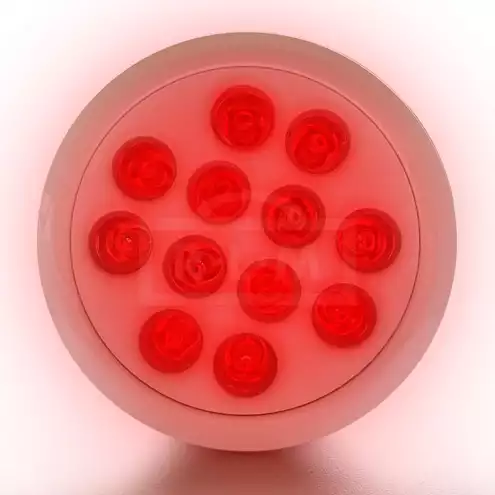
For an affordable 670 red light therapy device, you can check the hand-held Red Mini 670, which is basically a lightbulb with LEDs.

The Red 670 Device has unique lenses which disperse 670 nm red light for a more uniform irradiation of the body. This device is high intensity and also suitable for the whole body.
Red Light Therapy Devices
Devices used for red light therapy generally use LED or lasers. However, for at-home red light therapy, they are usually with diodes. LEDs are put together for different therapeutic purposes.
Red light therapy devices also differ in shape and form, since they are used for different purposes, including skin treatments, but also for example for thyroid gland irradiation at home. Thus some are transcranial devices (devices that go over the head), and some are light-emitting lamps or panels.
Best 670 Red Light Therapy Device for Your Needs
When choosing your product it’s best to think of what you’ll use your 670 red light therapy device for. Choose the best 670 red light therapy device based on your needs. In case that you prefer to irradiate your whole body, you need a larger lamp with more diodes with more energy output.
Search for a device that is from a trusted brand, even if you see way cheaper alternatives online. You should be assured that your 670 nm red light therapy device emits enough light for therapeutic purposes. Without going into too much detail, power density and energy density, measured in mW/cm2 and 120 J/ cm2 respectively, is also important.
Choosing the Right Red Light Therapy Device
As I said, energy output, size and other similar reasons taken into account, it’s best when you choose the right red light therapy device to pick a trusted brand. Unless you’re very much into reading about red light therapy devices and studies, it’s good to stick to someone who knows their stuff.
For example, Red Light Man offers the Red 670 Device that has a unique design with lenses that promise best beam angle for high penetration. Another key feature of their devices, for example the mixed red light therapy device, is that they list full specs on their website.
You can also check the linked above Wellred website for a transcranial device option.
Cheap 670 Red Light Therapy Device for At-Home Treatment
Of course, 670 red light devices come with different pricetags. That being said, some photobiomodulation device companies offer pretty cheap lamps. The most affordable option would be indeed a lightbulb with diodes.
So even small and cheaper devices with LED diodes emitting a range of red light wavelengths with peaks at 670 nm would have an effect. When lit at the head, this will penetrate through the water-based brain and have the biological effects on it.
Best 670 Red Light Therapy Device for Your Needs
When choosing your product it’s best to think of what you’ll use your 670 red light therapy device for. Choose the best 670 red light therapy device based on your needs. In case that you prefer to irradiate your whole body, you need a larger lamp with more diodes with more energy output.
Search for a device that is from a trusted brand, even if you see way cheaper alternatives online. You should be assured that your 670 nm red light therapy device emits enough light for therapeutic purposes. Without going into too much detail, power density and energy density, measured in mW/cm2 and 120 J/ cm2 respectively, is also important.


